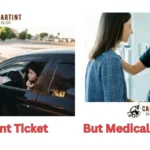Having dark tint on car windows refers to applying a film or coating to the glass in order to reduce the amount of visible light that can pass through. This is done for privacy, comfort from sunlight, or aesthetic reasons. However, many states have laws restricting overly dark tint to ensure safety and visibility.
“Is it illegal to have dark tint on your car windows in the United States?” This question arises for many drivers interested in adding tint to their car windows. With laws that vary by state and opacity percentage, it can be confusing to determine what level of tint darkness is permitted. Getting this wrong could result in fines or needing window replacement.
Laws regarding dark tinted car windows in the U.S. are determined at the state level. While requirements differ across states, in general there are restrictions on the darkness allowed on the front driver and passenger windows. Some states prohibit any tint on the front windows, while others allow up to a certain percentage of visible light transmission.
Is car tint illegal in the United States?
While dark tinted car windows are not outright illegal across the entire United States, every state has laws restricting the allowable level of tint darkness on vehicle windows.
Tint is measured by the percentage of visible light transmission (VLT), with lower percentages indicating darker tint. When it comes to window tinting, it’s crucial to adhere to local regulations to avoid a Window Tint ticket, but medical exception.
What percentage of tint is illegal?
The illegal tint percentage depends on the state and which car windows have film applied. Most states prohibit overly dark tint on front driver and passenger side windows. Common illegal tint levels for front windows are
| State | Illegal Front Window Tint |
| California | 70% VLT |
| Florida | 28% VLT |
| New York | 70% VLT |
| Texas | 25% VLT |
This means that in Florida, any front window tint darker than 28% visible light transmission (VLT) is illegal. Meanwhile, Texas allows darker 25% VLT tint on front windows. Drivers must check regulations for their state.
Which states prohibit dark car tint?
States with the strictest tint laws, like Pennsylvania, restrict even mild tint on front side windows. Meanwhile states like California prohibit darker than 70% VLT tint even on rear windows.
What are the fines for illegal tint?
Getting cited for overly dark illegal car window tint can result in fines ranging from $50 up to a few hundred dollars in most states. However, some states impose over $1000 fines for vehicles with noncompliant excessively dark tint.
How strictly are tint laws enforced?
Enforcement of window tint laws varies greatly across states. Some states actively issue citations for noncompliant vehicles, while in other areas illegal tint is rarely ticketed unless tied to another offense. Additionally, regulations tend to be more strictly enforced on front driver/passenger windows versus rear windows.
What is considered dark car window tint?
Dark tint refers to window films that allow a low percentage of visible light transmission (VLT). Typically tints below 35% VLT would be considered dark, blocking over half the sun’s rays. 20% VLT tint or lower is very dark.
How dark is 5% window tint?
A 5% VLT window tint blocks 95% of visible light rays. This is an extremely dark tint that allows minimal light into the vehicle. At this darkness cars can appear nearly blacked-out from the exterior. Most states prohibit using 5% tint on front driver and passenger windows.
What does 20% vehicle tint look like?
20% VLT tint blocks 80% of sunlight. It has a noticeable dark appearance, giving windows a deep shade. From outside the car, 20% makes it difficult to see passengers and contents inside during the daytime. This level of tint may be legal on rear windows in some states.
Can you get 50% tint on front windows?
Yes, 50% VLT tint can often be used on front driver and passenger windows legally per state laws. At half light transmission, 50% tint cuts glare and heat while still allowing good visibility. It offers a lighter tint than limo or blackout shades.
What darkness is limo tint?
Limo tint refers to a common commercial window tint that blocks around 70% of visible light transmission. This allows only 20-30% of sunlight into the vehicle interior, making it quite dark. Limo tint is generally illegal for private non-commercial vehicles.
Why do states restrict dark tinted car windows?
States restrict overly dark tinted car windows primarily for safety reasons. Excessively dark window tint can significantly reduce visibility for the driver, especially at night. This poses risks not only for the driver but for other motorists, pedestrians and property. As a result, most states prohibit drivers from having front windshield or front side window tints that block too much light transmission.
Does dark tint reduce night visibility?
Yes, research shows that dark tinted windows can impair visibility at night. Tint darkness is measured by the percentage of light that can pass through the film. The darker the tint, the lower the light transmittance. Studies indicate that reduced light transmittance from window tint can make it harder for drivers to see pedestrians, road signs, and hazards at night.
Can police see through blacked-out windows?
Most states do not allow vehicles to have extremely dark “blackout” tint that police cannot see through. Having opaque windows prevents officers from being able to observe inside a vehicle during traffic stops, creating a safety risk. As a result, tint laws prohibit levels of darkness that would obscure an officer’s view.
Is light transmittance related to safety?
Higher light transmittance allows more visibility, which is why many state laws restrict tint darkness, particularly on front driver and passenger windows. Research shows a correlation between the amount of light able to pass through window tint and the safety of the vehicle occupants as well as the public.
Do tinted windows increase risk of crashes?
While findings are mixed, some studies have found an association between darker window tint and a higher risk of certain crashes. Excessively dark tint can obstruct the driver’s view and reduce the visibility of the vehicle to others. However, moderate darkness that still meets legal light transmission levels may pose little to no elevated crash risk.
Are there exemptions for dark tinted car windows?
Many states allow exemptions or waivers for drivers to have darker tinted windows beyond the legal limits if they have a documented medical condition. Common conditions include sunlight sensitivity, skin cancer, lupus, or migraines. Drivers must provide medical documentation and apply for an exemption permit.
Can medical exemptions allow darker tint?
Yes, medical exemptions can allow drivers to have extremely dark limo tint or even blackout tint on their car windows if a doctor confirms it is medically necessary. With an approved exemption, people with conditions like lupus or skin cancer may legally use darker tints for health reasons.
Do window tint laws apply to all vehicles?
Window tint laws generally apply to all passenger vehicles, but some states provide exceptions for certain vehicle types. For example, darker tint may be allowed on SUVs, vans, limos, police cars, and public transportation vehicles. So tint regulations are not always uniform across all car types.
What special cases permit blackout tint?
Aside from medical necessity, blackout window tint is sometimes permitted for certain specialized vehicles used to transport high-profile public figures. Armored vehicles and those used by law enforcement or government officials may qualify for waivers allowing nearly opaque blackout tinting.
When can you get a waiver for dark window tint?
If cited for excessively dark illegal tint, some states give drivers the option to apply for a waiver allowing them to keep the darker tint. To get approved, you typically need documentation for medical reasons, vehicle type exceptions, or proof that removing the tint causes undue hardship.
How can I find my state’s car window tint laws?
You can find your state’s specific laws on allowable levels of car window tint by checking your state government’s official website, often through the Department of Motor Vehicles or Highway Safety division. Most states provide resources to lookup the legal light transmittance percentages permitted on different car windows.
Is there a window tint law lookup by state?
5 uses for the keyword phrase Is there a window tint law lookup by state?
- Determine what percentage of visible light transmission is legal on your front, rear, and backseat car windows based on where you live.
- Check if your current window tint meets regulations or if you need to remove overly-dark film to avoid fines.
- Compare the tint limits set by your state to neighboring states before getting windows tinted.
- Lookup whether medical exemptions can allow you to get darker tint due to conditions like light sensitivity.
- Research what types of penalties like citations or fees apply if you are caught violating window tint laws.
What sites detail tint restrictions by location?
In addition to Tint Center and Window Tint Laws, sites like BestRide.com allow you to select your state to see a summary of that state’s specific car window tinting restrictions. These sites keep updated resources to detail the tint limits based on location.
Where do I request state vehicle codes on tint?
You can request the official state vehicle or transportation codes that contain the window tinting provisions through your state legislature’s statutes database. States continually update these codes, so reviewing the published statutes gives the detailed, legally-binding tinting restrictions.
How often are window tinting laws updated?
Window tint laws do not frequently change, but states may update them in their codes every few years. For example, many states updated or created car window tint provisions in the mid-late 2000s. Check your state’s statutes every couple years or contact your Department of Motor Vehicles to ask if there have been any recent modifications.
Frequently Asked Question
What percentage of tint is illegal?
Most states prohibit tint below 35-40% light transmittance on front side windows.
Can any car windows be fully blacked out?
Typically rear and back windows can have very dark “limo tint” applied legally.
Do medical conditions allow exemptions to tint laws?
Yes, a signed doctor’s note detailing a medical necessity like light sensitivity can permit darker tint.
What are penalties for illegal window tint?
Violating window tint laws can result in fines, citations, or being required to remove overly-dark film.
How can I check my state’s specific tint restrictions?
Websites like Tint Center, BestRide, and Window Tint Laws detail state-by-state tint limits.
Conclusion
Laws on tinted car windows vary significantly by state. While most states allow darker tint on rear and backseat windows, the majority prohibit overly dark tint on front driver and passenger windows. Reasons for restricting tint levels include ensuring adequate visibility and safety.
Though a few states have no front window tinting limits, most specify allowable visible light transmission percentages. Drivers should check their state’s exact regulations before applying dark film. What level of tint is illegal depends entirely on where you live. Some states permit limo-style blackout tint, while others mandate 70% VLT front windows.
Failure to comply risks fines or citations, so drivers must know their state’s car window tinting rules. Resources like Tint Center simplify this process. But it remains the owner’s responsibility to guarantee their custom tint meets the standards where the vehicle is registered.



